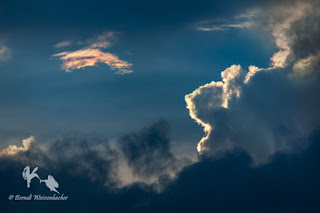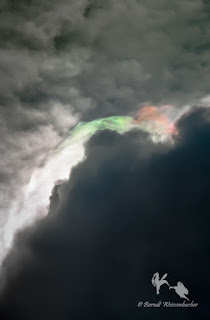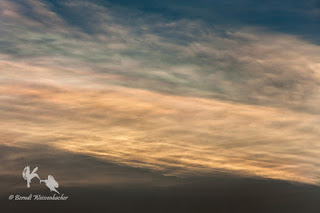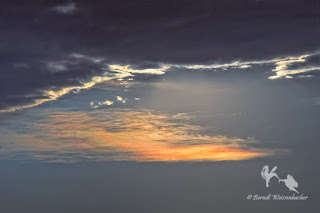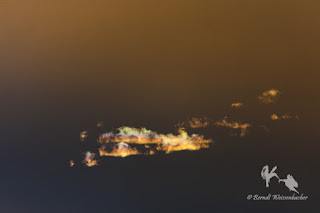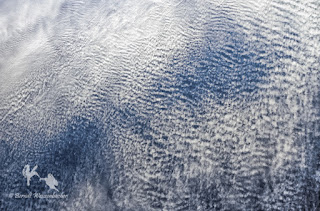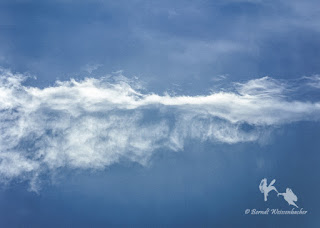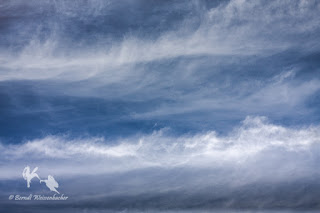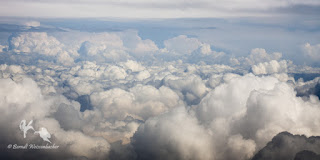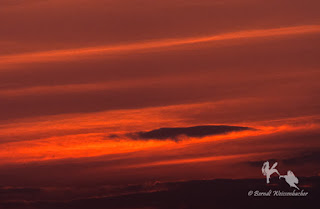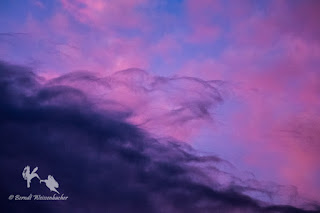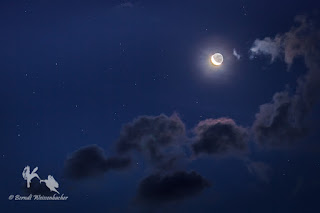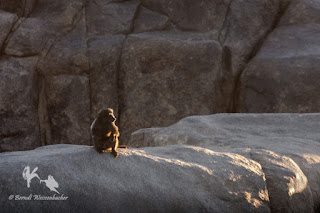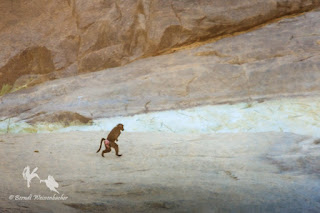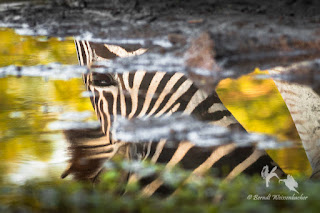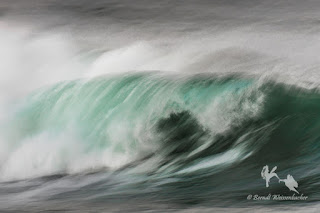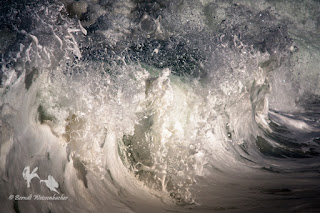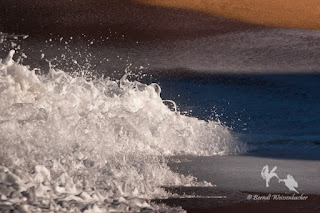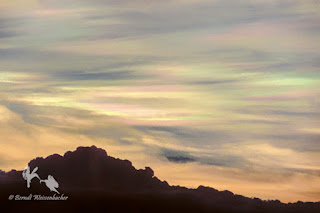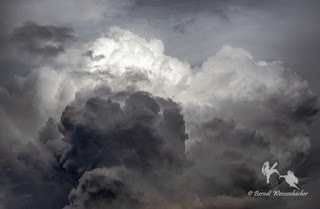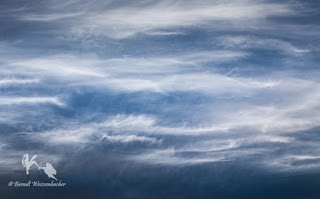Like most
children, I was a cloud-spotter from the knee-high stage onwards. The
cloudscape above the South African veld
made an indelible impression on me. Hours on end we children would lie on our
backs, the hot sun baking our tanned faces, arms and legs, high above us
cumulus clouds suspended in the heavenly blue: Big Ears-ears, Pinocchio-noses,
old-man-faces, unicorns and other creatures and landscapes of mythopoeia. Add
to that the seemingly endless wisps and stripes of high cirrus clouds, the
towering walls of cumulonimbus castles. I imagined an enchanted world amongst
the clouds, a world higher and greater than my own down below.
Alas, in
contrast to almost all other children, my perception of the world around me has
never changed. I still seek for, yearn for, the charmed and enchanting in an
otherwise stultifying adult world. So I remain a cloud watcher, peepers pointed
skyward, still searching for my fairy queen and yet another glimpse of that
other world. Nowadays, however, looking is not enough. For me, as a
photographer, clouds remain endlessly fascinating: in constant flux, never
static in pattern or process, and especially the incessant wonderful play of
light and shadow that arises.
Special
excitement is provided by iridescent clouds. When thin cloud layers
(particularly cirrostratus, altostratus and altocumulus clouds) are present in
the sky, it can happen that sunlight shining through these clouds breaks apart
into its rainbow colours. This phenomenon is observed best when the clouds
occur in an arc of less than 20° from the sun. Since you are facing the sun,
often the light is too bright then to observe the phenomenon or to capture an
impressive image on film. It is better to photograph this singular spectacle at
sunrise or sunset, especially when the sun is shielded by other clouds so that
no light falls directly on the lens.
In general,
iridescence appears when surfaces of objects are composed of multiple layers or
the surfaces comprise a very thin film, as for example in soap bubbles or when
oil is spilt on water. In these instances, the light that impinges on the
object is reflected, not off one surface, but off several different tiers. If
the incident light originates from a single source (as is the case with
sunlight), iridescence occurs strongly since the wavelengths of the reflected
light rays coming from different layers can interfere with each other. In this
way, some wavelengths are either dampened or enhanced. With interference all
the wavelengths reflected off an iridescent object added together no longer
appear white (the total sum of all colours in sunlight), but parts of the
object now show a colour cast. The resulting spectacle depends on the angle of
view, of course.
In clouds
specifically, several processes that occur simultaneously cause iridescence. When
sunlight passes through a thin cloud layer, some light rays are absorbed; most
rays, however, are scattered by the cloud particles, so that the cloud usually
appears white. Some light rays pass between the water droplets or ice crystals
and are thus diffracted. Other rays pass through the droplets and are then
refracted and split into their constituent colours.
Whether sunlight
passes through or between water droplets, whether it is diffracted, reflected
or refracted, the light rays that finally travel towards the observer can still
cause interference phenomena. Since sunlight originates from a single (point)
source, all the light rays are still in phase with each other (even after the
many changes that have occurred); therefore, two light rays can become
superimposed one on the other to give rise to interference. With this, some
colours may cancel out; others may become exaggerated, because the different
wavelengths of light are affected differently during interference.
The result of
this long journey by the light rays through the diaphanous cloud is iridescence.
From the point of view of the observer, the angle between the cloud and the sun
must be less than 20° for this phenomenon to be visible. In addition, the
resulting colour spectacle is dependent on the density of the cloud or cloud
layer. If the clouds are very thin and wispy, the colours that appear are
washed out and indistinct; on the other hand, if the clouds are too dense,
either too much light is absorbed or the rays are scattered too irregularly to
result in iridescence. Other factors that modulate the appearance and intensity
of iridescence include the size of the cloud's water droplets or ice crystals,
the movement of the cloud and the way in which the sunlight impinges on the
cloud surface.
Cloud
iridescence is not a halo phenomenon, since the colours occur in bands rather
than in concentric rings, as is the case with halos. Iridescent clouds also
differ from the similar nacreous or polar stratospheric clouds and noctilucent
clouds. Although the physical processes involved in all these cases are the
same, iridescent clouds can be observed at most latitudes and during daylight
hours. The cloud type involved in iridescence always comprises cirrus- or
stratus-type clouds in the troposphere (the lowest layer of the atmosphere,
starting at the earth's surface and extending to a height of between 7 km at
the poles and 17 km at the equator). In contrast, nacreous clouds can only be
observed at latitudes larger the 58° from the equator. Also, nacreous clouds
are found in the stratosphere (up to 30 km above the earth's surface). In the
case of noctilucence, high clouds in the mesosphere (between 50 km and 80 km
above the planet surface) may still reflect sunlight after sunset (or before
sunrise) during very deep dusk.
So, do I still
spend time on my back these days? Of course! The only change that has occurred
is that the bones complain when I attempt to stand up after a long sojourn in
the magical, mythical realm of clouds.
